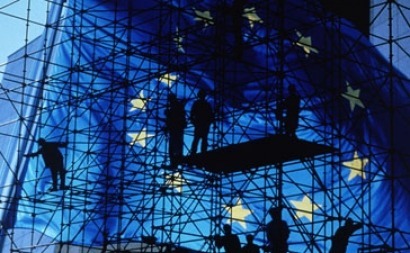
The Connecting Europe Facility will finance projects which fill the missing links in Europe's energy, transport and digital backbone. It will also make Europe's economy greener by promoting cleaner transport modes, high speed broadband connections and facilitating the use of renewable energy in line with the Europe 2020 Strategy.
In addition the funding for energy networks will further integrate the internal energy market, reduce the EU's energy dependency and bolster the security of supply. To assist with the financing of the Connecting Europe Facility, the Commission has also adopted the terms for the Europe 2020 Project Bond Initiative which will be one of a number of risk-sharing instruments upon which the facility may draw in order to attract private finance in projects. The pilot phase will start already next year.
“By focussing on smart, sustainable and fully interconnected transport, energy and digital networks, the Connecting Europe Facility will help to complete the European single market,” said the Commission in a recent press release.
The Commission also expects Connecting Europe Facility investments to act as a “catalyst for further funding from the private and public sector” by giving infrastructure projects credibility and lowering their risk profiles.
"The Connecting Europe Facility and the Project Bond Initiative are a perfect demonstration of the value added that Europe can provide. These proposals will help to build the roads, railways, energy grids and pipelines, and broadband networks that are so important to our citizens and businesses. We are closing the missing links in Europe's infrastructure networks that otherwise would not be built. This investment will generate growth and jobs and at the same time make work and travel easier for millions of European citizens and businesses," said European Commission President, José Manuel Barroso.
Connecting transport
The Connecting Europe Facility will invest €31.7 billion to upgrade Europe's transport infrastructure “to build missing links and remove bottlenecks”. The idea is to improve links between different parts of the EU, to make it easier for different countries to exchange goods and people with each other.
“By focussing on transport modes that are less polluting, the Connecting Europe Facility will push our transport system to become more sustainable. It will also give consumers more choice about how they want to travel,” explains the Commission. Transport systems in Europe have traditionally developed along national lines. The EU has a crucial role to play in coordinating between Member States when planning, managing and funding cross-border projects. A well-functioning network is essential to the smooth operation of the single market and will boost competitiveness. The Commission proposed to create corridors to cover the most important cross-border projects. It has estimated that by 2020, €500 billion will be needed to realise a real European network, including €250 billion for removing bottlenecks and completing missing links in the core network.
Connecting energy
The energy sector can also look forward to €9.1 billion being invested in trans-European infrastructure, helping to meet the EU 2020 energy and climate objectives. The Connecting Europe Facility will also help to remove financial gaps and network bottlenecks. The internal market for energy will be further developed through better interconnections, leading to security of supply and the possibility to transport renewable energy in a cost effective manner across the EU. Both citizens and companies need to be able to rely on energy being available at all times and at an affordable price. The money from Connecting Europe will act as a leverage for more funding from other private and public investors.
The full texts of the proposals including details of the innovative financing and project bond initiative involved in the Connecting Europe Facility can be found here.
For additional information:

